Well, obviously - we've got 2 apple trees in the back garden.
The trees have been left to grow pretty wild and will need a good cutting back and pruning once they've lost their leaves. However, in the mean time the branches are sagging with fruit.
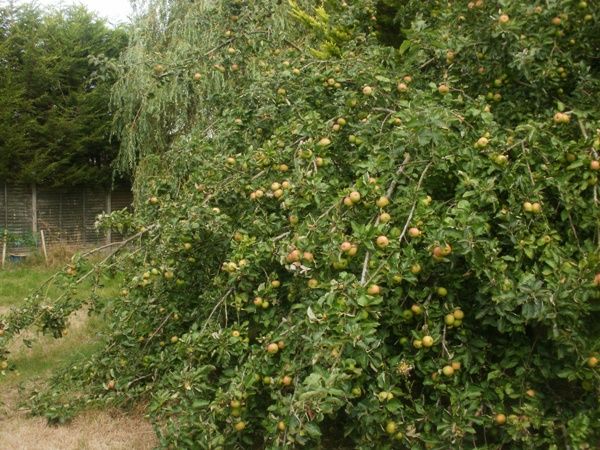
I enlisted the help of a couple of friends to help harvest some of the apples. You know who your mates are when they'll stand on a metal ladder holding a metal pole in a thunderstorm.
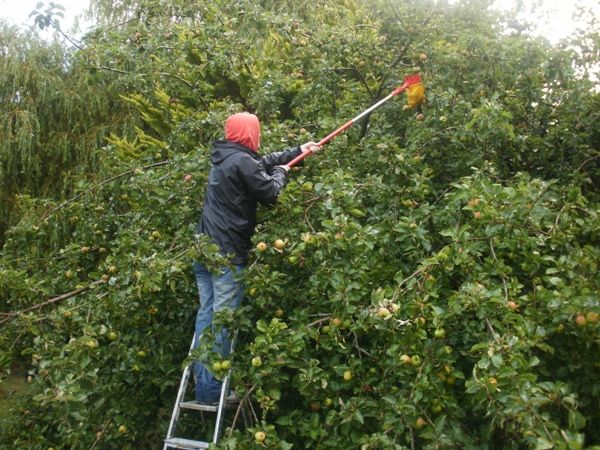
It rained on and off all day but we called it a day at 4 sacks of apples.
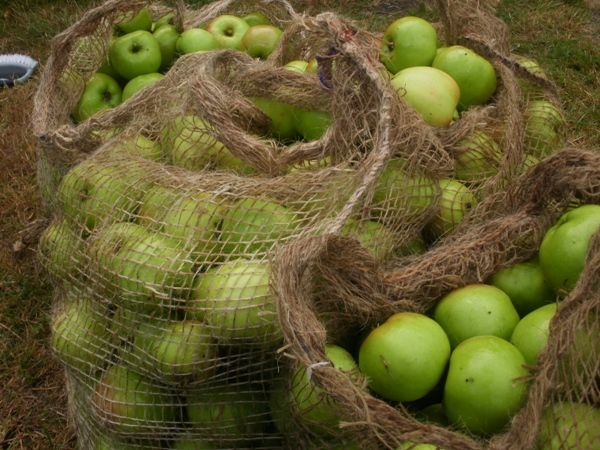
It seems that apples are fairly unwilling to give up their juice in comparison to some other fruits. As I'm working at relatively low batch amounts I employed the following method.
Wash the apples in a sink to remove bugs, bacteria and dirt.
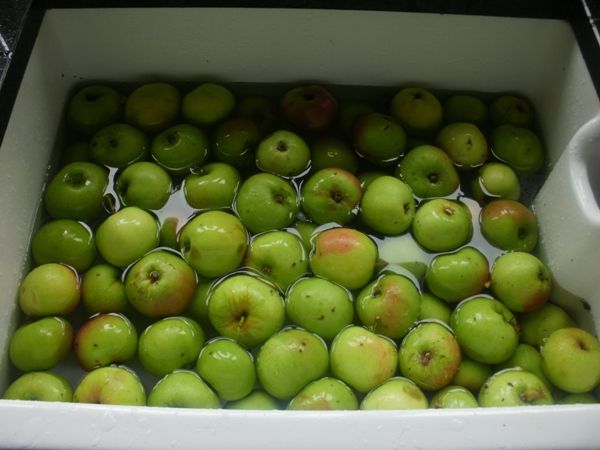
Roughly chop into sort of half inch pieces.

Blitz in a food processor with a plastic chopping blade.
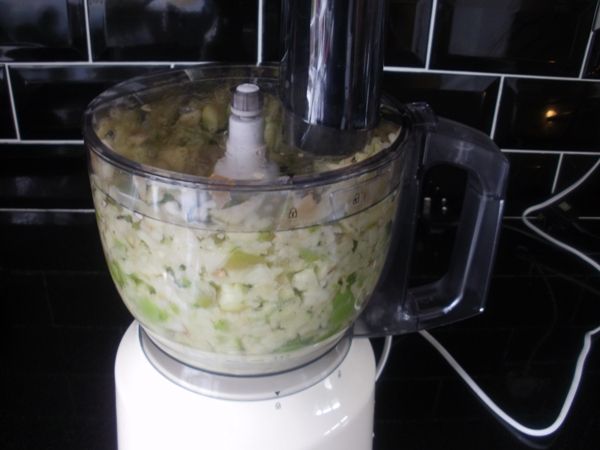
Pack into a press and strain through a muslin into a clean brewing bin.
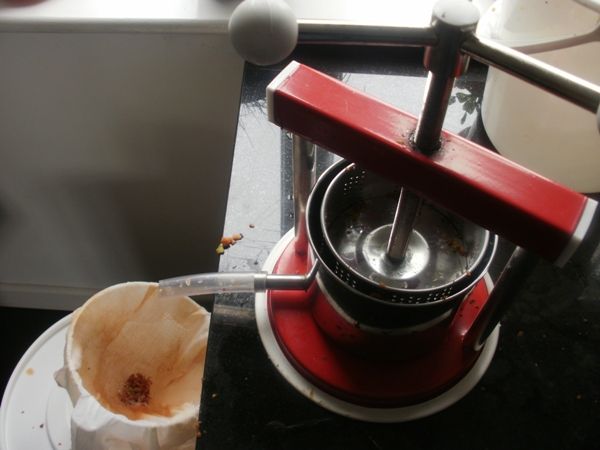
It's pretty laborious to be honest. You get into a rhythm after a bit but its long hard work. Each press from my little setup gives me about half a litre of must. I decide to call it a day at about 12 litres.
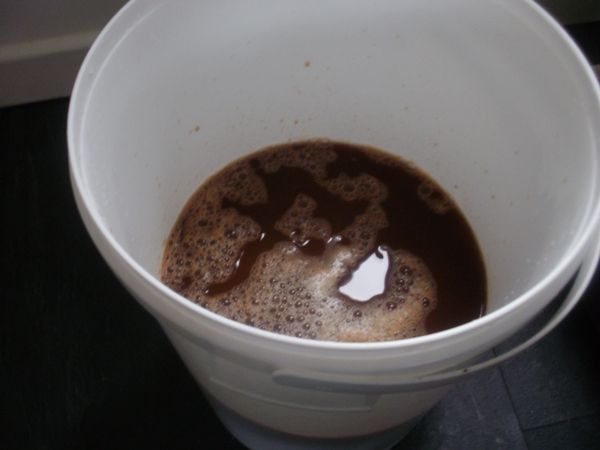
I did return 2 weeks later with a special select batch of apples. The ideal mix I wanted for my cider was 70% apples off my eating tree, backed with 30% sour apples off my larger tree. I don't know the varieties of the apples in my garden, nor care as long as they taste good.
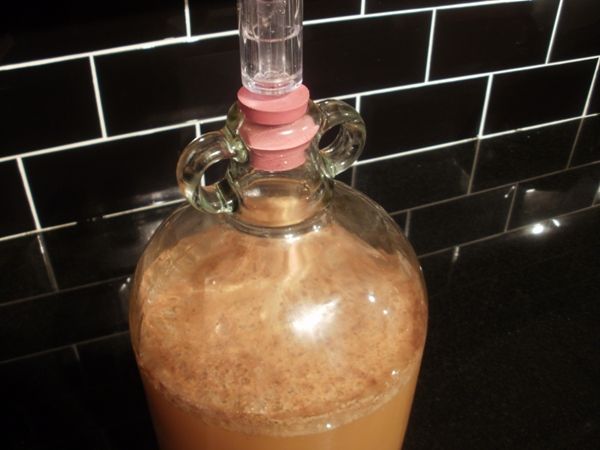
I pressed another gallon of this mix into a demijohn and a litre into a bottle that I pasteurised by leaving in my mash tun at 70something degC for 40 minutes. That juice came out tasting amazing.
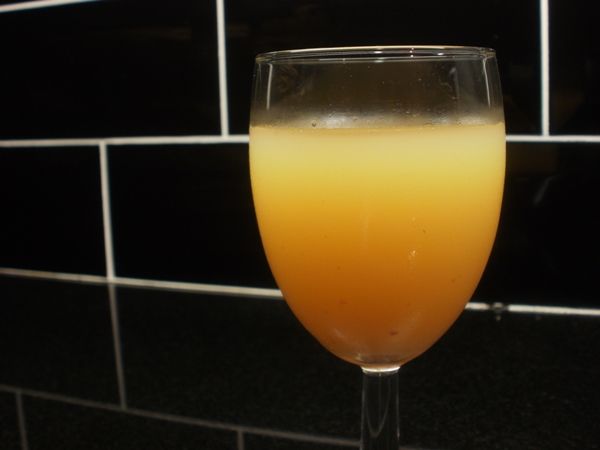
Back to my bin though, I pitched in a sachet of wine yeast and popped a lid fitted with an airlock on top. After about a week it had done the bulk of its fermenting, a hydrometer reading confirmed that, but I left it another week to settle further.

I moved right on at this stage to bottling. Strictly speaking I should have racked off into a new bin to let it settle further and de-haze a bit but a bit of cloudiness never scared me. I prepped up my bottling area by sterilising caps, bottles, a bucket and a syphoning tube.
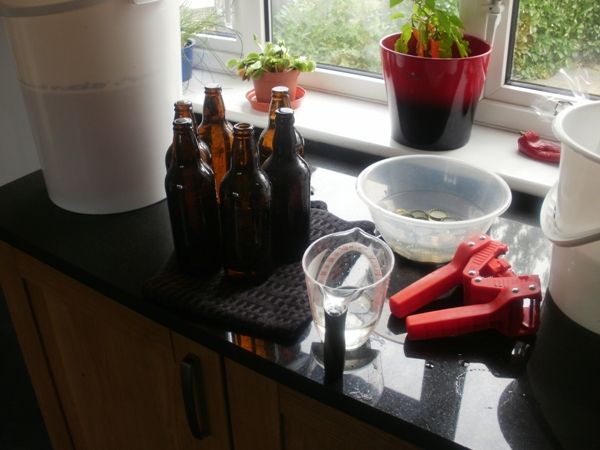
The bottles I used were collected over some time leading up to the day and involved hours of torturous beer and cider drinking. I gave all of them a thorough wash and sterilise and kept them sweet by placing a small patch of cling film over the top.
I syphoned off the cider from my big bin into the bucket through more muslin. Each bottle I primed with a teaspoon of caster sugar dissolved into a small quantity of water. Next I syphoned my cider into the bottles and immediately capped.
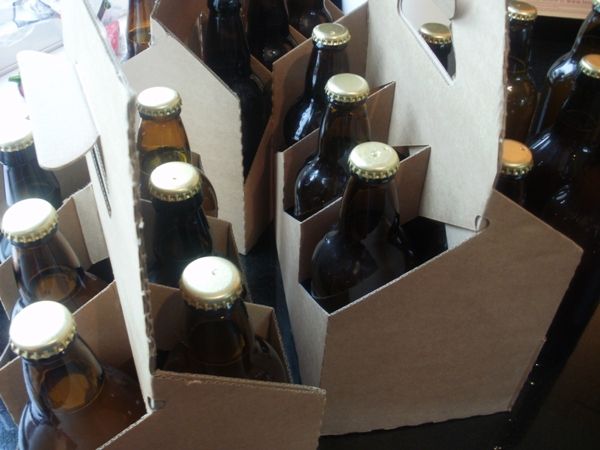
I'll leave this until Christmas before drinking most of it, but I couldn't resist trying a sneaky preview of one.
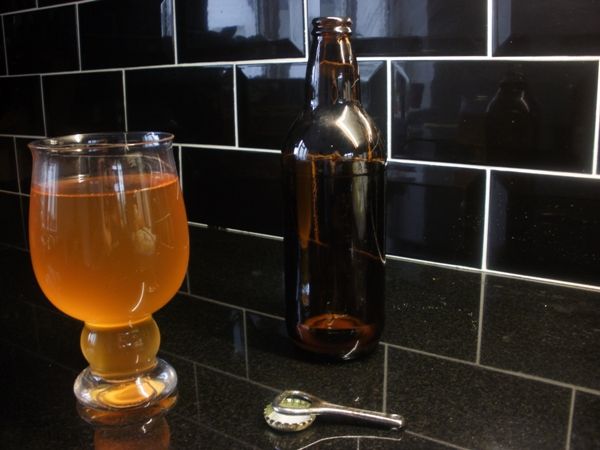
It was dry, quite sharp, with just the right amount of fizz. Which is pretty much exactly how I like my cider so I'm quite pleased all in all. It does however have a slightly woody note in the finish which I take to be an indication that I harvested too early. My lessons learned for next year are to harvest in October, and I think stick to this single variety of apple. My sweeter apples are perfect for eating and when mixed in with the sharper ones make a delicious apple juice, but when it comes to cider this single variety can't be beat.
No comments:
Post a Comment